immune support
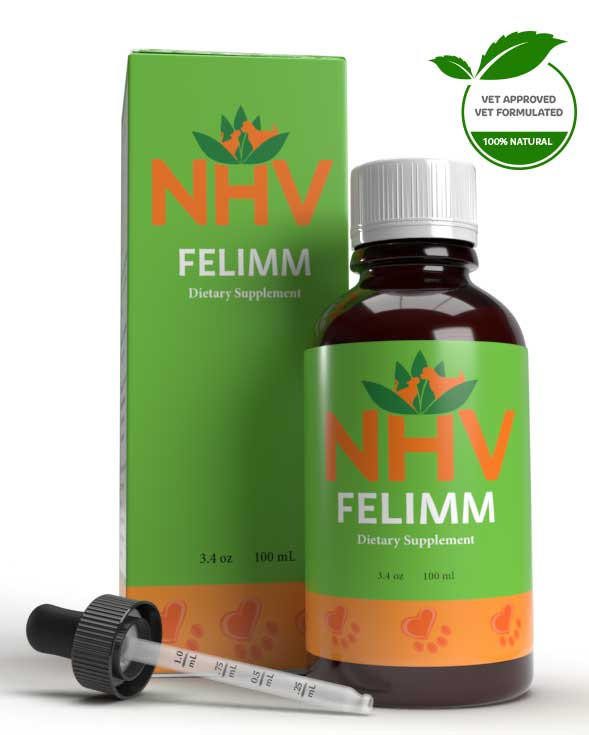
free shipping over $100 (USA & Canada)
1-877-937-4372 the pet expert hotline
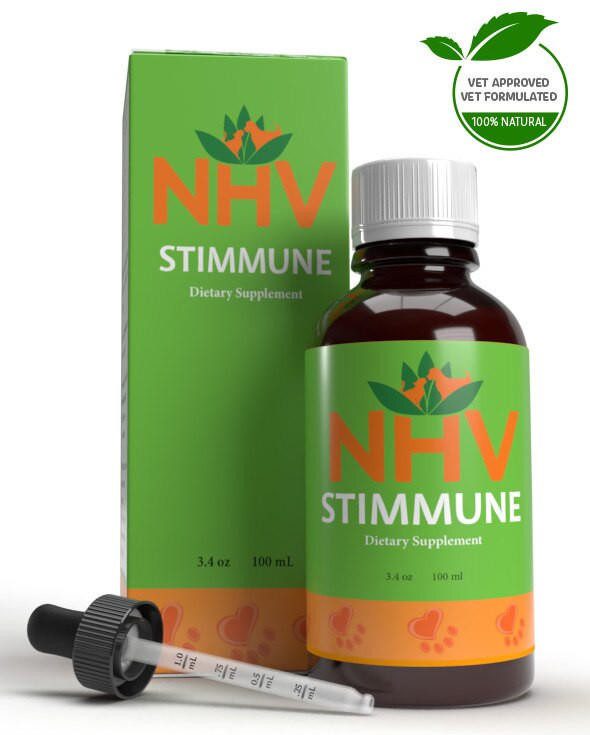
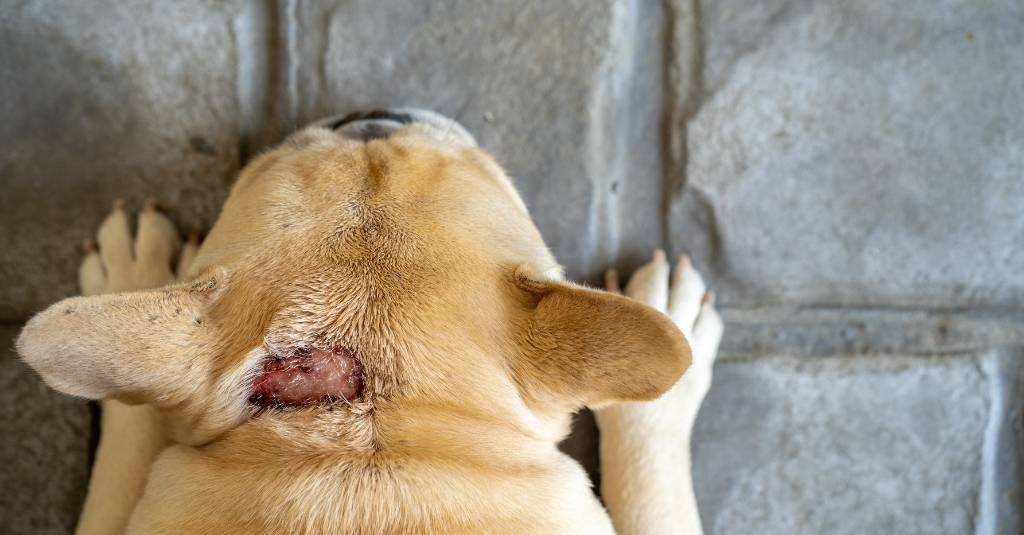
Hot Spot on dogs is a common skin condition that is also known as acute moist dermatitis. In this Vet Talks article, I want to share with you the causes, prevention, treatments, and natural remedies for hot spots in dogs.
Fur and itchy dry skin can be an ideal environment for bacteria to grow.
Did you know the skin is the largest organ of the body? It’s always susceptible to injuries. It is the first barrier between the body and the outside world. Moist dermatitis or a “hot spot” is a condition that involves an area of skin that has become inflamed and infected, leading to a raw, moist lesion on the skin. These lesions are extremely itchy and uncomfortable.
Any condition that can cause damage to the skin can technically cause a hot spot. This happens because damage breaks the surface of the skin and allows bacteria to grow and proliferate. If left untreated, this leads to a warm, moist lesion that becomes a hot spot. Here are some common causes of hot spots on dogs:
Fur and itchy dry skin can be an ideal environment for bacteria to grow and cause a troubling infection like Pyoderma. This usually affects the area of the dog’s trunk (back and belly), and the common symptoms include intense itching and reddening ulcers.
A Natural anti-allergy blend for dogs is NHV Stimmune, which can be beneficial as it works as a natural antibiotic, supports the immune system, and encourages a healthy response to food allergies and skin allergies (dermatitis).
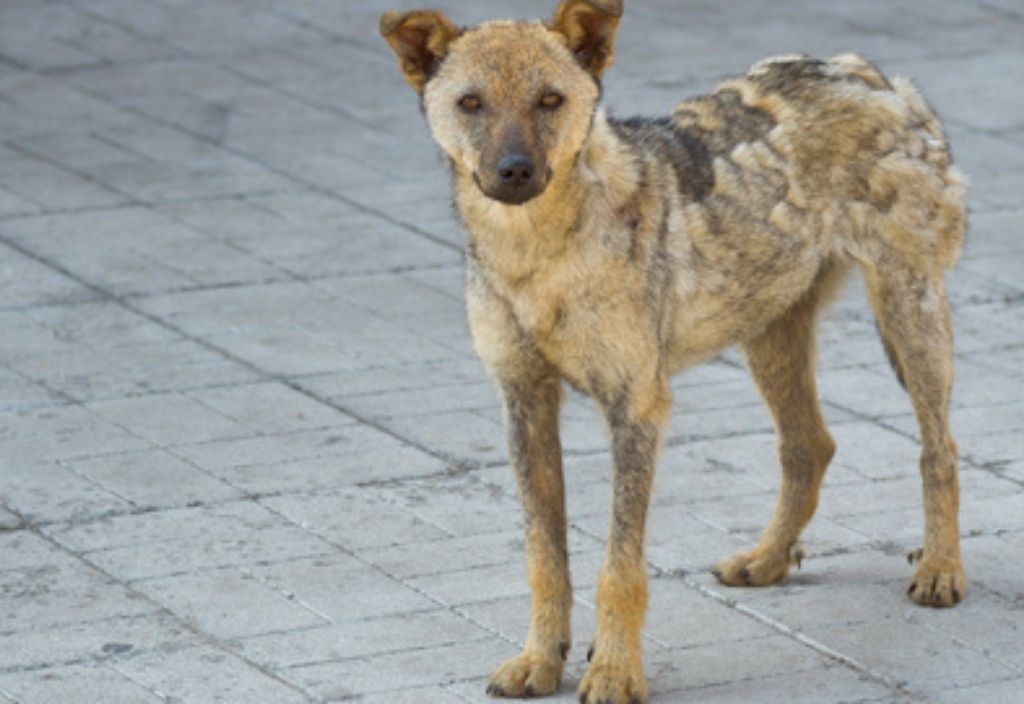
There are two common fungal skin infections in pets – yeast infections and ringworm infections. Yeast infections are usually caused by food or environmental allergies, or even thyroid imbalance. Tinea, or ‘ring worm’ is not a worm at all, but a fungus or mold-like parasite that develops in a damp skin patch obstructed from ventilation. It is transmitted through contact with an animal that has this disease. It causes alopecia (loss of hair) and reddened lesions.
A helpful natural blend for dogs with bacterial or fungal infections is NHV Felimm. This natural formula contains great herbs that are known to help fight fungal, viral, and bacterial infections. If the cause of the hot spot is ringworm or yeast or bacterial infection, Felimm will help the body fight it and promote healing.
Allergic reactions can be triggered by various things – sweat, ticks, flea, shampoo, or even a garment that your dog is wearing! The itch spurred by an allergic reaction can become a hot spot. Amongst all of them, allergies caused by flea bites are more common in veterinary dermatology. The allergen, in this case, is the saliva of the flea. When the flea bites the animal, intense pruritus (itch) occurs. This can cause hair loss and wounds that eventually lead to hot spots.
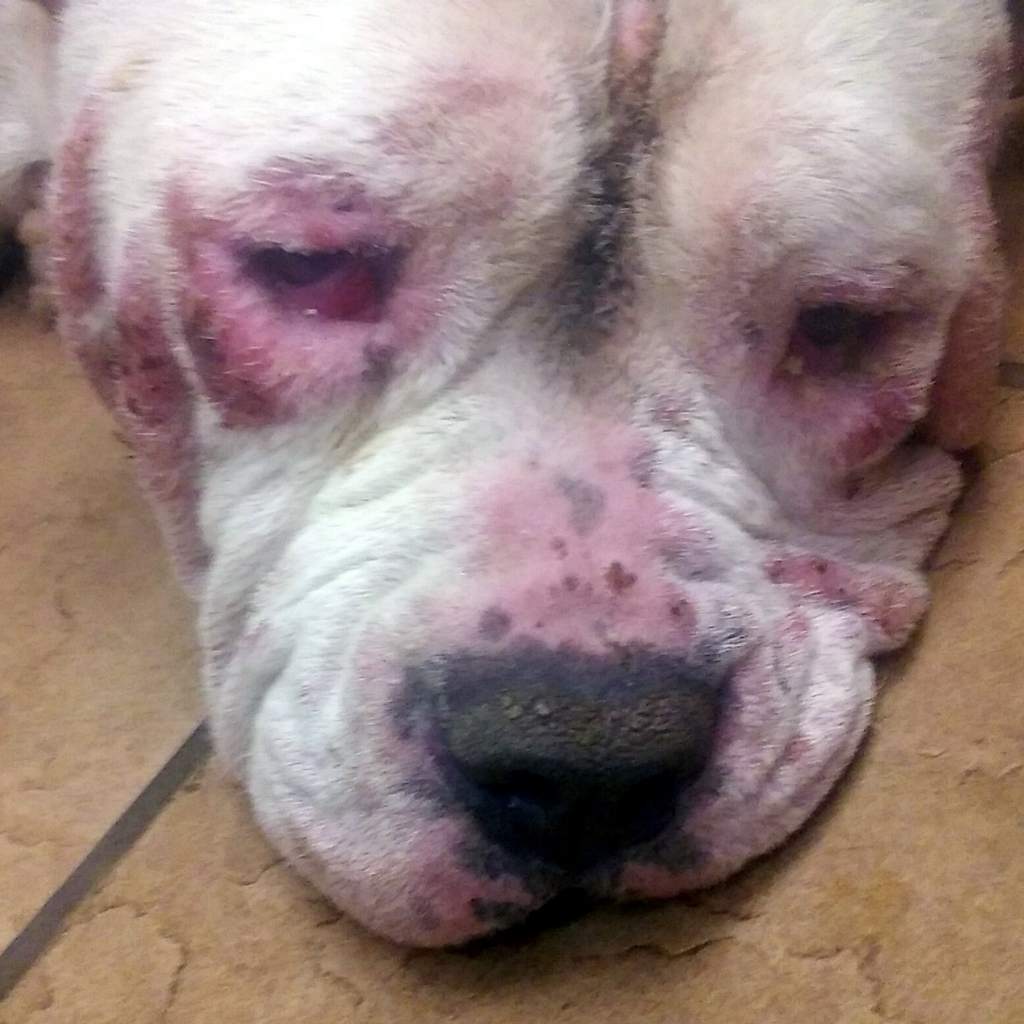
Mange is caused by mites and can lead to very nasty hot spots and sores. Scabies or sarcoptic mange is contagious and can even be transmitted to humans. Black mange is not contagious, but it is genetic. Sores on the skin can release secretions and cause a very strong odor. You can learn more about mange and how to help a dog with it in Dr. Cook’s article on mange.
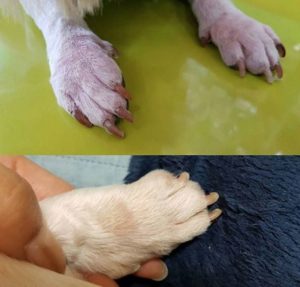
Dogs can injure their own skin by licking and gnawing on areas such as their paws and belly. This can be due to stress, or separation anxiety, or discomfort (in joints, for example). Sometimes dogs will gnaw on their fur simply out of boredom. It is important to ensure that your furry friend receives plenty of mental and physical stimulation according to their breed and age.
NHV Lesstress helps reduce anxiety caused by separation or a stressful situation or illness. A calming blend like NHV Lesstress can help soothe the nervous system.
Another exacerbating factor in hot spots is moisture. If a pet has any one of these underlying conditions and is also exposed to moisture, whether by swimming, bathing, or humid environments, this creates favorable conditions for bacteria to grow and fester into a hot spot.

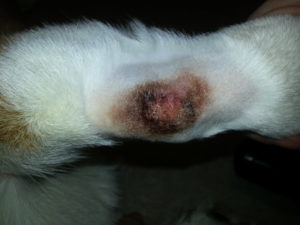
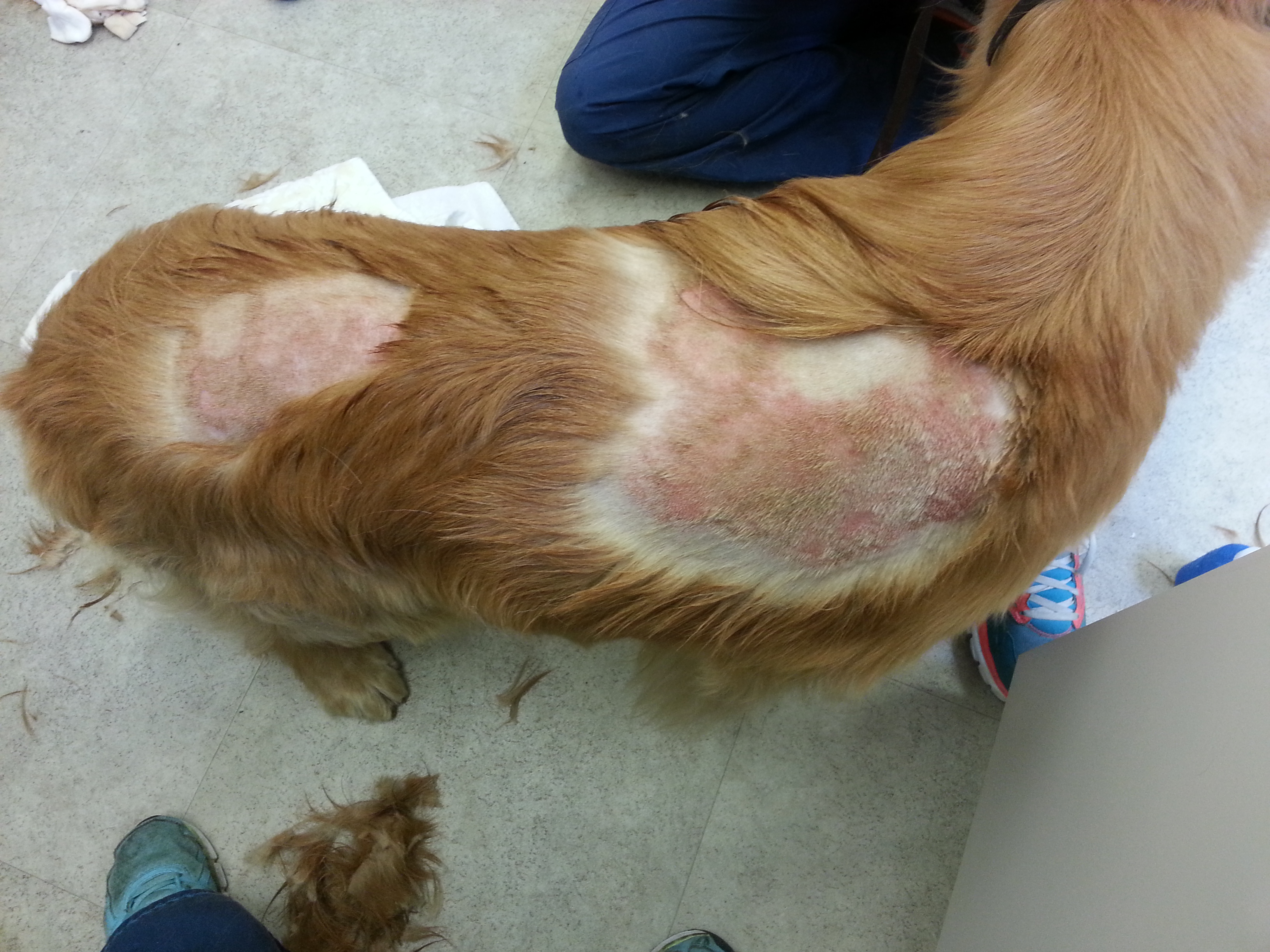
It is important that you thoroughly dry your pet after a bath or swimming to avoid prolonged moisture contact with the skin. This is especially true for long, double-coated breeds such as golden retrievers, German shepherds, chow chows, Labradors, and more.
There are many other causes that can lead to hot spots: burns, leishmaniasis, fights with other animals, carcinomas, vasculitis (inflammation of blood vessels), metabolic changes, and sometimes mistreatment.
If the animal does not receive prompt and appropriate treatment, hot spots can progress to:
If you are able to easily place its origin, there are natural remedies that can help restore healthy skin and get rid of the itch and inflammation. If you cannot identify the cause, you should head to the vet to understand how to help your dog. Any medicine or ointment that the vet prescribes or any remedy that our Pet Experts recommend will depend on the cause of the hot spot
Natural remedies are helpful for hot spots on dogs. Do ensure that you take advice from veterinary professionals and that you are consistent and administer the product daily according to instructions. I say this because hot spots can reoccur if you abandon treatment as soon as you see them disappear.
NHV Ouch Away Spray helps calm skin irritation and also promotes fur growth. NHV All Clear Ointment helps against bacterial infection and will help reduce redness and inflammation.
It is not recommended to bandage to cover the hot spot because it will make the area a perfect place for the proliferation of anaerobic bacteria, which cannot thrive when in contact with oxygen. An E-collar, or “cone” will prevent your pet from licking the area.
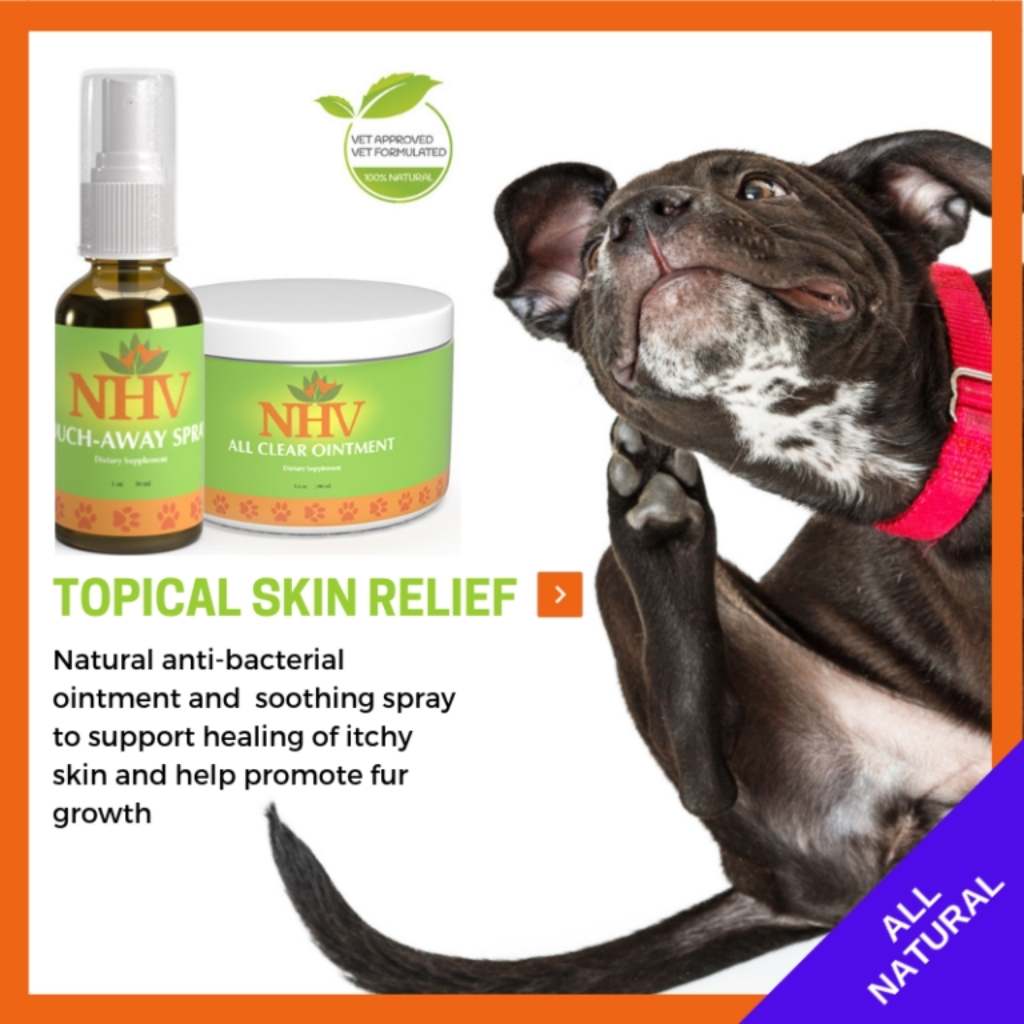
It is important to remember that these steps are palliative measures. Some cases of hot spots on dogs that I have handled were quite serious and urgent. Therefore you should not attempt to diagnose your dog on your own.
A veterinarian can correctly diagnose the cause of the hot spot on dogs and indicate the appropriate treatment, which may be through conventional treatments such as antibiotics, anti-inflammatories, shampoos, ointments or through natural remedies, or both. If your furry friend is having hot spots and you would like to know more about the right treatment, please reach out to me. I’ll always be thankful to be able to help you.
You can consult Dr. Amanda here or get a customized diet plan for your pet made from her. Learn more about prevention for hot spots on dogs using vet-formulated and vet-approved natural pet remedies from NHV Natural Pet Products on our website.
immune support

Natural herbal supplement to help your dog fight many viral, fungal, and bacterial related infections.
buy 2 and save $3
3 month supply for a small to medium size pet.
What is it?
Felimm helps your pup fight a variety of fungal and viral infections. This infection remedy for dogs helps combat Canine Herpesvirus, Canine Influenza, Lyme disease, Staphylococcal Bacterial, Ehrlichiosis, Aspergillosis, Blastomycosis Cryptococcus, Valley Fever, and yeast infections.
How Does it Work?
Why Should I Trust It?
Formulated with powerful, yet gentle herbs.

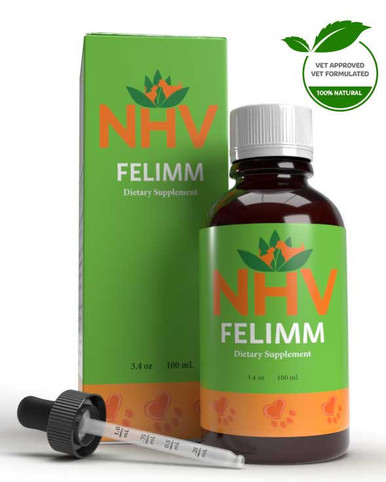
What is it?
Felimm helps your pup fight a variety of fungal and viral infections. This infection remedy for dogs helps combat Canine Herpesvirus, Canine Influenza, Lyme disease, Staphylococcal Bacterial, Ehrlichiosis, Aspergillosis, Blastomycosis Cryptococcus, Valley Fever, and yeast infections.
How Does it Work?
Why Should I Trust It?
Formulated with powerful, yet gentle herbs.

Dogs can get viral, fungal, and bacterial infections of many kinds. Canine herpesvirus, Canine influenza, Lyme disease, Staphylococcal bacterial, Ehrlichiosis, Aspergillosis, Blastomycosis Cryptococcus, Valley Fever, and yeast infections just to name a few. Felimm is a natural vet-formulated remedy that helps support your dog’s body and helps them fight back against all of these conditions. Add Felimm canine infection remedy to the regimen prescribed by your vet to give them the most comprehensive possible care.
Felimm is an infection remedy for dogs with many ingredients that have strong antiviral properties. Turmeric, Aloe Vera, St. John’s Wort, and Myrrh have antiseptic, antibacterial, antiviral, and anti-inflammatory qualities that help make Felimm a powerful remedy to support your dog against a variety of conditions.
Viruses, as well as fungal and bacterial infections, can harm your dog’s immune system and affect the function of other organs. Some of these viruses, such as canine herpesvirus (CHV) or canine influenza virus, affect the respiratory and reproductive system. Felimm is also an excellent support supplement for pets fighting lymphoma.
To help your pet heal, it is important to support the affected organs and balance their immune system. NHV Felimm contains a variety of potent herbs that help support and defend the body against viral, fungal, and bacterial infections while boosting the immune system and detoxifying the lymph nodes.
NHV Felimm can help with Lyme disease in dogs and cats - a bacterial infection transmitted by ticks. This dog infection remedy can also help with Cryptococcus, a fungal infection caused by environmental yeast.
NHV’s holistic pet products contain human-grade herbal ingredients. All of our supplements are vet-approved and specially formulated by a veterinarian and master herbalist with over 20 years of experience.
Call the NHV pet expert hotline at 1-877-937-4327 to learn about our dog infection treatment aids.
St. John’s Wort – A herb known to have strong antiviral, immunostimulant, anti-inflammatory, antiretroviral and antibacterial properties. St. John’s Wort has a history of use to help the body fight the herpes virus, as well as viral hepatitis and HIV. It helps with inhibiting the reproduction of the viruses and has been shown to be beneficial for canine distemper.
Turmeric – A very powerful antioxidant that helps combat the damaging effects of free radicals. It strengthens liver function and contains strong antifungal properties.
Aloe Vera – Helps control fungal infections, and helps improve white blood cell counts which helps destroy infectious organisms. An herb that is known for its immunostimulating, antibacterial, antitumor, and anti-inflammatory properties.
Alfalfa – An extremely nutritious herb that is high in minerals, amino acids, a good source of chlorophyll, and high in antioxidants.
Burdock – Is an herb and a food that is very nutritive as it contains high levels of minerals such as iron and calcium. Strong antiviral properties support the liver and gallbladder, and help clean and improve the quality of blood. It helps remove toxins that accumulate during illness and helps scavenge free radicals from a dog’s body.
Cat’s Claw – Has traditionally been used in herbal medicine to treat the herpes virus and other related viral infections due to properties that help balance the immune system while fighting off infections and inflammation.
Osha – Used for centuries to help fight viral infections that affect the respiratory system. It helps to relieve inflammation of the bronchial tube, relax the muscles, and stops bacteria and viruses from spreading. A natural immune builder that helps dogs fight infections and helps improve immune function.
Dandelion – A highly nutritious food that stimulates liver secretion, protects the kidneys, improves digestion, and stimulates appetite. It helps provide a pet’s body with the vitamins and minerals needed when fighting an infection. It is known to help reduce inflammation.
Gotu Kola – An antioxidant-rich herb known to strengthen the immune system and protect cells from damage caused by free radicals. It helps calm the nervous system to reduce the added stress canines exhibit when fighting infections. It is also used to help with respiratory issues.
Usnea – An immune system stimulant with antibacterial and antifungal properties that helps protect a dog’s suppressed immune system from respiratory and sinus infections, bronchial issues, canine influenza, and herpes virus. It helps boost and restore proper immune function.
Goldenseal – An herb known for improving immune function. It helps eliminate toxins from the blood. It has strong fungal fighting properties and is used when dealing with Candida and thrush in dogs.
Myrrh – a medicinal herb that dates back to 1550 BC. Considered to be a natural antibiotic, antiviral, and astringent herb. It strengthens and improves the immune system and helps fight infections.
Select your pet's weight to determine the correct dose.
To be taken twice daily. Determine your pet’s weight and then use the easy chart below to determine the correct dose. This is the minimum dosage.
Pet's Weight Dosage
0 - 15 lb = 0.5 ml
16 - 30 lb = 1.0 ml
31 - 45 lb = 1.5 ml
46 - 60 lb = 2.0 ml
61 - 75 lb = 2.5 ml
Over 75 lb = 3.0 ml
How to Administer
Shake well before use. The easiest method is to use the dropper provided and place the drops into your pet’s food or favorite treat. You can also use the dropper and squirt directly into the pet’s mouth. Some pets can be finicky, if this occurs consider hiding the drops in foods most pet’s love such as fish, chicken or yogurt or a favorite treat. If your pet only eats dry food then soak a few kibbles at feeding time.
For Best Results
Herbal dietary supplements are beneficial to the health and well-being of your pet and are safe for long-term use. Every pet responds to natural herbal supplements differently, therefore it is important to be consistent and administer the product daily. Supplements generally take two to four weeks to take effect, however this will vary from one animal to the next.
Product Storage
All NHV Natural Pet Products are pure herbal extracts and contain no artificial additives, preservatives or coloring. Shelf life after opening is 6 months and must be refrigerated after opening.
Cautions and Contraindications
Do not use Felimm in pregnant or nursing animals. Speak to your vet before using our products. A second visit is recommended if your pet’s condition does not improve, or deteriorates after continued use of the supplements.
All information provided by NHV Natural Pet Products is for educational purposes only.
Dogs can get viral, fungal, and bacterial infections of many kinds. Canine herpesvirus, Canine influenza, Lyme disease, Staphylococcal bacterial, Ehrlichiosis, Aspergillosis, Blastomycosis Cryptococcus, Valley Fever, and yeast infections just to name a few. Felimm is a natural vet-formulated remedy that helps support your dog’s body and helps them fight back against all of these conditions. Add Felimm canine infection remedy to the regimen prescribed by your vet to give them the most comprehensive possible care.
Felimm is an infection remedy for dogs with many ingredients that have strong antiviral properties. Turmeric, Aloe Vera, St. John’s Wort, and Myrrh have antiseptic, antibacterial, antiviral, and anti-inflammatory qualities that help make Felimm a powerful remedy to support your dog against a variety of conditions.
Viruses, as well as fungal and bacterial infections, can harm your dog’s immune system and affect the function of other organs. Some of these viruses, such as canine herpesvirus (CHV) or canine influenza virus, affect the respiratory and reproductive system. Felimm is also an excellent support supplement for pets fighting lymphoma.
To help your pet heal, it is important to support the affected organs and balance their immune system. NHV Felimm contains a variety of potent herbs that help support and defend the body against viral, fungal, and bacterial infections while boosting the immune system and detoxifying the lymph nodes.
NHV Felimm can help with Lyme disease in dogs and cats - a bacterial infection transmitted by ticks. This dog infection remedy can also help with Cryptococcus, a fungal infection caused by environmental yeast.
NHV’s holistic pet products contain human-grade herbal ingredients. All of our supplements are vet-approved and specially formulated by a veterinarian and master herbalist with over 20 years of experience.
Call the NHV pet expert hotline at 1-877-937-4327 to learn about our dog infection treatment aids.
St. John’s Wort – A herb known to have strong antiviral, immunostimulant, anti-inflammatory, antiretroviral and antibacterial properties. St. John’s Wort has a history of use to help the body fight the herpes virus, as well as viral hepatitis and HIV. It helps with inhibiting the reproduction of the viruses and has been shown to be beneficial for canine distemper.
Turmeric – A very powerful antioxidant that helps combat the damaging effects of free radicals. It strengthens liver function and contains strong antifungal properties.
Aloe Vera – Helps control fungal infections, and helps improve white blood cell counts which helps destroy infectious organisms. An herb that is known for its immunostimulating, antibacterial, antitumor, and anti-inflammatory properties.
Alfalfa – An extremely nutritious herb that is high in minerals, amino acids, a good source of chlorophyll, and high in antioxidants.
Burdock – Is an herb and a food that is very nutritive as it contains high levels of minerals such as iron and calcium. Strong antiviral properties support the liver and gallbladder, and help clean and improve the quality of blood. It helps remove toxins that accumulate during illness and helps scavenge free radicals from a dog’s body.
Cat’s Claw – Has traditionally been used in herbal medicine to treat the herpes virus and other related viral infections due to properties that help balance the immune system while fighting off infections and inflammation.
Osha – Used for centuries to help fight viral infections that affect the respiratory system. It helps to relieve inflammation of the bronchial tube, relax the muscles, and stops bacteria and viruses from spreading. A natural immune builder that helps dogs fight infections and helps improve immune function.
Dandelion – A highly nutritious food that stimulates liver secretion, protects the kidneys, improves digestion, and stimulates appetite. It helps provide a pet’s body with the vitamins and minerals needed when fighting an infection. It is known to help reduce inflammation.
Gotu Kola – An antioxidant-rich herb known to strengthen the immune system and protect cells from damage caused by free radicals. It helps calm the nervous system to reduce the added stress canines exhibit when fighting infections. It is also used to help with respiratory issues.
Usnea – An immune system stimulant with antibacterial and antifungal properties that helps protect a dog’s suppressed immune system from respiratory and sinus infections, bronchial issues, canine influenza, and herpes virus. It helps boost and restore proper immune function.
Goldenseal – An herb known for improving immune function. It helps eliminate toxins from the blood. It has strong fungal fighting properties and is used when dealing with Candida and thrush in dogs.
Myrrh – a medicinal herb that dates back to 1550 BC. Considered to be a natural antibiotic, antiviral, and astringent herb. It strengthens and improves the immune system and helps fight infections.
Select your pet's weight to determine the correct dose.
To be taken twice daily. Determine your pet’s weight and then use the easy chart below to determine the correct dose. This is the minimum dosage.
Pet's Weight Dosage
0 - 15 lb = 0.5 ml
16 - 30 lb = 1.0 ml
31 - 45 lb = 1.5 ml
46 - 60 lb = 2.0 ml
61 - 75 lb = 2.5 ml
Over 75 lb = 3.0 ml
How to Administer
Shake well before use. The easiest method is to use the dropper provided and place the drops into your pet’s food or favorite treat. You can also use the dropper and squirt directly into the pet’s mouth. Some pets can be finicky, if this occurs consider hiding the drops in foods most pet’s love such as fish, chicken or yogurt or a favorite treat. If your pet only eats dry food then soak a few kibbles at feeding time.
For Best Results
Herbal dietary supplements are beneficial to the health and well-being of your pet and are safe for long-term use. Every pet responds to natural herbal supplements differently, therefore it is important to be consistent and administer the product daily. Supplements generally take two to four weeks to take effect, however this will vary from one animal to the next.
Product Storage
All NHV Natural Pet Products are pure herbal extracts and contain no artificial additives, preservatives or coloring. Shelf life after opening is 6 months and must be refrigerated after opening.
Cautions and Contraindications
Do not use Felimm in pregnant or nursing animals. Speak to your vet before using our products. A second visit is recommended if your pet’s condition does not improve, or deteriorates after continued use of the supplements.
All information provided by NHV Natural Pet Products is for educational purposes only.
stress & anxiety support
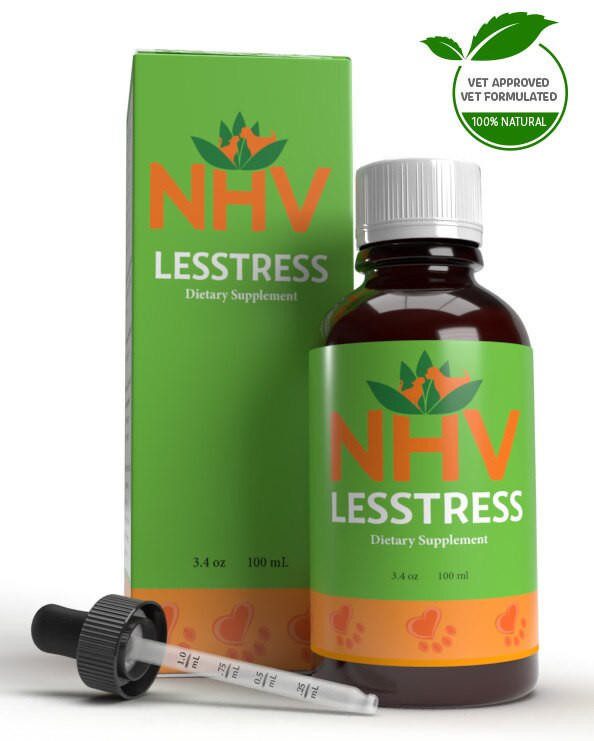
Natural Support for Canine Stress and Anxiety
buy 2 and save $3
3 month supply for a small to medium size pet
What is it?
Everyone knows what stress feels like, and we all know that too much stress can make us ill—high blood pressure, ulcers and even cancer can result from excessive stress. Like us, dogs can get stressed by numerous factors as well. Help your furkiddo relax into a long and happy life with NHV Lesstress - a natural dog stress support.
How does it work?
Why trust it?
NHV uses full-spectrum extracts of human-grade herbs, so your pet only gets the best.

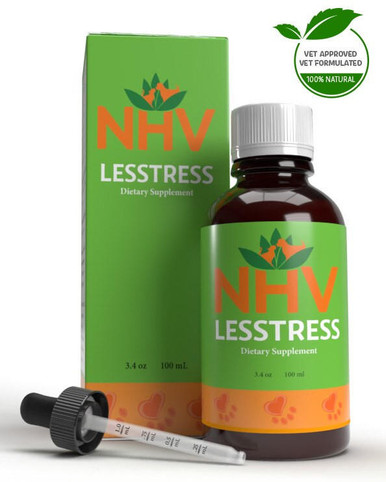
What is it?
Everyone knows what stress feels like, and we all know that too much stress can make us ill—high blood pressure, ulcers and even cancer can result from excessive stress. Like us, dogs can get stressed by numerous factors as well. Help your furkiddo relax into a long and happy life with NHV Lesstress - a natural dog stress support.
How does it work?
Why trust it?
NHV uses full-spectrum extracts of human-grade herbs, so your pet only gets the best.

Natural Dog Stress Reliever Supplemental Support
With a heightened sense of hearing and smell, small events that seem mundane to us can be terrifying and stressful for your dogs. Sometimes the stress is from the ride to the office, or maybe they are missing their human companions. This all contributes to changes in behavior like excessive panting, drooling, sweaty paws, dilated eyes, pacing, excessively shedding, or just completely shutting down. Some dogs become so stressed that it may lead to fear and aggression.
Other forms of stress in a dog’s life include:
In addition to panting, excessive barking/whining, chewing on themselves, shivering (when it’s not cold), panicked tail wagging, or tense muscles, stress can also cause GI tract issues such as diarrhea or vomiting.
The key to a healthy pup is balance. Too much or too little activity can be harmful, as well as too much or too little socialization. A balanced, clean diet also helps maintain the body and the mind. If your dog is susceptible to stress, you can use calming herbs like those found in NHV Lesstress. This formulation gently acts on the nervous system and immune system to provide a natural dog stress reliever.
How NHV’s Natural Dog Stress Relief Eases Stress and Anxiety
For stressful experiences such as separation anxiety, the loss or addition of a furry friend, special events (eg. fireworks) and illness (stress can cause conditions to worsen), the natural (non-addictive) sedative properties of Lesstress gently relax the nervous system and endocrine system. Ingredients like Chamomile, Passion Flower and Lemon Balm work to calm nerves while ingredients like Reishi, Eleuthero, and Echinacea Angustifolia are very beneficial for helping the body adapt to stress and illness and stimulate healthy immune function.
Help Support Your Dog Naturally
All NHV supplements like Lesstress are 100% natural and created by a holistic veterinarian and a master herbalist, specially formulated for pets. Feel free to contact our veterinary professionals to get more insight into your little one’s health and wellbeing.
Made with the finest, organically grown, or ethically harvested herbs. Made specifically for pets, vet-formulated and vet approved.
Lesstress for Dogs
Select your pet's weight to determine the correct dose.
To be taken twice daily. Determine your pet’s weight and then use the easy chart below to determine the correct dose. This is the minimum dosage.
Pet's Weight Dosage
0 - 15 lb = 0.5 ml
16 - 30 lb = 1.0 ml
31 - 45 lb = 1.5 ml
46 - 60 lb = 2.0 ml
61 - 75 lb = 2.5 ml
Over 75 lb = 3.0 ml
For small animals (rabbits, ferrets), avians and reptiles use 1 drop for every 2 lb of body weight.
How to Administer
Shake well before use.
The easiest method is to use the dropper provide and places the drops into your pet’s food or favorite treat. You can also use the dropper and squirt directly into the pet’s mouth.
Some pets can be finicky, if this occurs consider hiding the drops in foods most pet’s love such as fish, chicken or yogurt or a favourite treat. If your pet only eats dry food then soak a few kibbles at feeding time.
For Best Results
Herbal dietary supplements are beneficial to the health and wellbeing of your pet and are safe for long-term use. Every pet responds to natural herbal supplements differently, therefore it is important to be consistent and administer the product daily. Supplements generally take two to four weeks to take effect, however this will vary from one animal to the next.
Product Storage
All NHV Natural Pet Products are pure herbal extracts and contain no artificial additives, preservatives or coloring. Shelf life after opening is 6 months and must be refrigerated after opening.
Cautions and Contraindications
Do not use Lesstress in pregnant or nursing animals.
Speak to your vet before using our products. A second visit is recommended if your pet’s condition does not improve, or deteriorates after continued use of the supplements.
All information provided by NHV Natural Pet Products is for educational purposes only.
Natural Dog Stress Reliever Supplemental Support
With a heightened sense of hearing and smell, small events that seem mundane to us can be terrifying and stressful for your dogs. Sometimes the stress is from the ride to the office, or maybe they are missing their human companions. This all contributes to changes in behavior like excessive panting, drooling, sweaty paws, dilated eyes, pacing, excessively shedding, or just completely shutting down. Some dogs become so stressed that it may lead to fear and aggression.
Other forms of stress in a dog’s life include:
In addition to panting, excessive barking/whining, chewing on themselves, shivering (when it’s not cold), panicked tail wagging, or tense muscles, stress can also cause GI tract issues such as diarrhea or vomiting.
The key to a healthy pup is balance. Too much or too little activity can be harmful, as well as too much or too little socialization. A balanced, clean diet also helps maintain the body and the mind. If your dog is susceptible to stress, you can use calming herbs like those found in NHV Lesstress. This formulation gently acts on the nervous system and immune system to provide a natural dog stress reliever.
How NHV’s Natural Dog Stress Relief Eases Stress and Anxiety
For stressful experiences such as separation anxiety, the loss or addition of a furry friend, special events (eg. fireworks) and illness (stress can cause conditions to worsen), the natural (non-addictive) sedative properties of Lesstress gently relax the nervous system and endocrine system. Ingredients like Chamomile, Passion Flower and Lemon Balm work to calm nerves while ingredients like Reishi, Eleuthero, and Echinacea Angustifolia are very beneficial for helping the body adapt to stress and illness and stimulate healthy immune function.
Help Support Your Dog Naturally
All NHV supplements like Lesstress are 100% natural and created by a holistic veterinarian and a master herbalist, specially formulated for pets. Feel free to contact our veterinary professionals to get more insight into your little one’s health and wellbeing.
Made with the finest, organically grown, or ethically harvested herbs. Made specifically for pets, vet-formulated and vet approved.
Lesstress for Dogs
Select your pet's weight to determine the correct dose.
To be taken twice daily. Determine your pet’s weight and then use the easy chart below to determine the correct dose. This is the minimum dosage.
Pet's Weight Dosage
0 - 15 lb = 0.5 ml
16 - 30 lb = 1.0 ml
31 - 45 lb = 1.5 ml
46 - 60 lb = 2.0 ml
61 - 75 lb = 2.5 ml
Over 75 lb = 3.0 ml
For small animals (rabbits, ferrets), avians and reptiles use 1 drop for every 2 lb of body weight.
How to Administer
Shake well before use.
The easiest method is to use the dropper provide and places the drops into your pet’s food or favorite treat. You can also use the dropper and squirt directly into the pet’s mouth.
Some pets can be finicky, if this occurs consider hiding the drops in foods most pet’s love such as fish, chicken or yogurt or a favourite treat. If your pet only eats dry food then soak a few kibbles at feeding time.
For Best Results
Herbal dietary supplements are beneficial to the health and wellbeing of your pet and are safe for long-term use. Every pet responds to natural herbal supplements differently, therefore it is important to be consistent and administer the product daily. Supplements generally take two to four weeks to take effect, however this will vary from one animal to the next.
Product Storage
All NHV Natural Pet Products are pure herbal extracts and contain no artificial additives, preservatives or coloring. Shelf life after opening is 6 months and must be refrigerated after opening.
Cautions and Contraindications
Do not use Lesstress in pregnant or nursing animals.
Speak to your vet before using our products. A second visit is recommended if your pet’s condition does not improve, or deteriorates after continued use of the supplements.
All information provided by NHV Natural Pet Products is for educational purposes only.
injury support
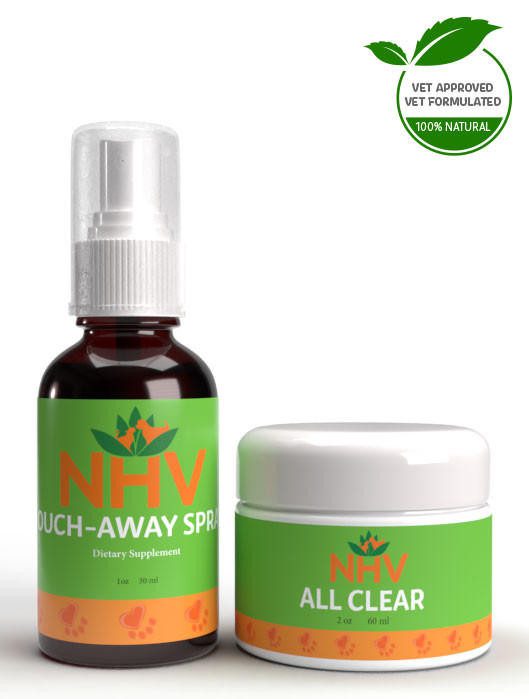
All-Clear Ointment & Ouch Away Spray
bundle and save with pet expert kits
3 month supply for a small to medium size pet.
What is it?
Our pets are susceptible to uncomfortable burns caused by exposure to chemicals, electricity, or heat from liquids or hot objects. Be prepared with these all-natural supplements are formulated to relieve the discomfort and irritation your pet experiences from these burns.
How Does it Work?
Why Should I Trust It?
All-natural supplements formulated and approved by veterinarians.


What is it?
Our pets are susceptible to uncomfortable burns caused by exposure to chemicals, electricity, or heat from liquids or hot objects. Be prepared with these all-natural supplements are formulated to relieve the discomfort and irritation your pet experiences from these burns.
How Does it Work?
Why Should I Trust It?
All-natural supplements formulated and approved by veterinarians.

Made with the finest, organically grown, or ethically harvested herbs. Made specifically for pets, vet-formulated and vet approved.
How to Administer
Topical Spray: Spray several times a day to affected area(s) until healed. It may sometimes be necessary to shave or trim your pet’s hair so that the Ouch Away Spray reaches the affected area. If necessary, cover the affected area with gauze dressing.
Caution
Do not spray near or into eyes or nose. May initially sting on open cut. A vet examination prior to use of this product is recommended. If your pet’s condition does not improve or deteriorates consult your vet and stop the use of the product.
Information presented by NHV Natural Pet Products is for educational purposes only.
How to Administer
Topical ointment: Clean and dry affected area(s). Apply to affected area 3 to 4 times per day. It may some times be necessary to shave or trim your pet’s hair so that the All Clear Ointment may penetrate better.
Caution
Do not apply on open or bleeding wounds.
Made with the finest, organically grown, or ethically harvested herbs. Made specifically for pets, vet-formulated and vet approved.
How to Administer
Topical Spray: Spray several times a day to affected area(s) until healed. It may sometimes be necessary to shave or trim your pet’s hair so that the Ouch Away Spray reaches the affected area. If necessary, cover the affected area with gauze dressing.
Caution
Do not spray near or into eyes or nose. May initially sting on open cut. A vet examination prior to use of this product is recommended. If your pet’s condition does not improve or deteriorates consult your vet and stop the use of the product.
Information presented by NHV Natural Pet Products is for educational purposes only.
How to Administer
Topical ointment: Clean and dry affected area(s). Apply to affected area 3 to 4 times per day. It may some times be necessary to shave or trim your pet’s hair so that the All Clear Ointment may penetrate better.
Caution
Do not apply on open or bleeding wounds.
Published: December 21, 2018